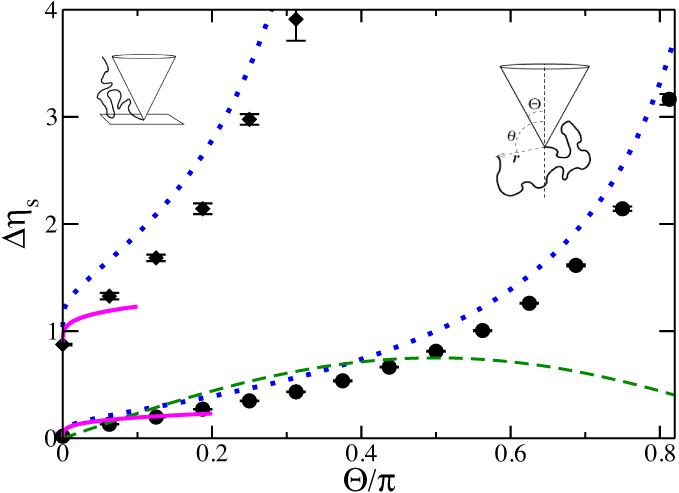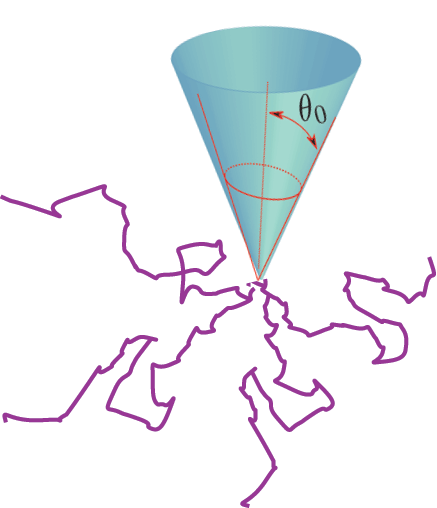Self-avoiding polymers
![]() Simulations: The dimerization method was used to generate samples of 108 SAWs on a cubic lattice,
Simulations: The dimerization method was used to generate samples of 108 SAWs on a cubic lattice,
for N =16, 32,...,1024.
By measuring the probability that a generated SAW does not intersect the boundary, we obtain N-Δγ

The phantom polymer results provide an excellent approximation, except for very thin cones.
The green dashed line is from an ε-expansion, treating the surface of the cone as a weak perturbation:
"Apex exponents for polymer-probe interactions,"
M. Slutsky, R. Zandi, Y. Kantor, M. Kardar, PRL 94, 198303 (2005)
![]() ε-expansion: A better treatment is to start with impenetrable boundaries,
ε-expansion: A better treatment is to start with impenetrable boundaries,
along the lines of a similar computation for a wedge
"Critical behaviour at an edge," J.L. Cardy, J. Phys. A: Math. Gen. 16 3617
"Polymer-mediated entropic forces between scale-free objects,"
M. F. Maghrebi, Y. Kantor, M. Kardar, PRE 86, 061801 (2012)
The loop-correction can only be calculated numerically in general, but for small opening angles we find

Is the exponent for the singular dependence on angle
?
Current simulations are not sufficient to answer this question
Many polymers
![]() The force on a single polymer, attached to a needle, is around 0.1 pico-Newton at 0.1 micron separation.
The force on a single polymer, attached to a needle, is around 0.1 pico-Newton at 0.1 micron separation.
This force, however, can be increased by attaching many polymers to the tip.

In the limit of small opening angle (a needle), we can utilize the large literature on star polymers:
"Statistics of many arm star polymers," K. Ohno, Phys. Rev A 40, 1524 (1989)
"Scaling theory of star polymers and general polymer networks in bulk
and semi-infinite good solvents," K. Ohno & K. Binder, J. Phys. France 49, 1329 (1988)
At the lowest order in ε-expansion, the force is simply multiplied by the number of polymers;
corrections are expected at higher orders, with the force increasing faster than linearly (as f 3/2 ?)
